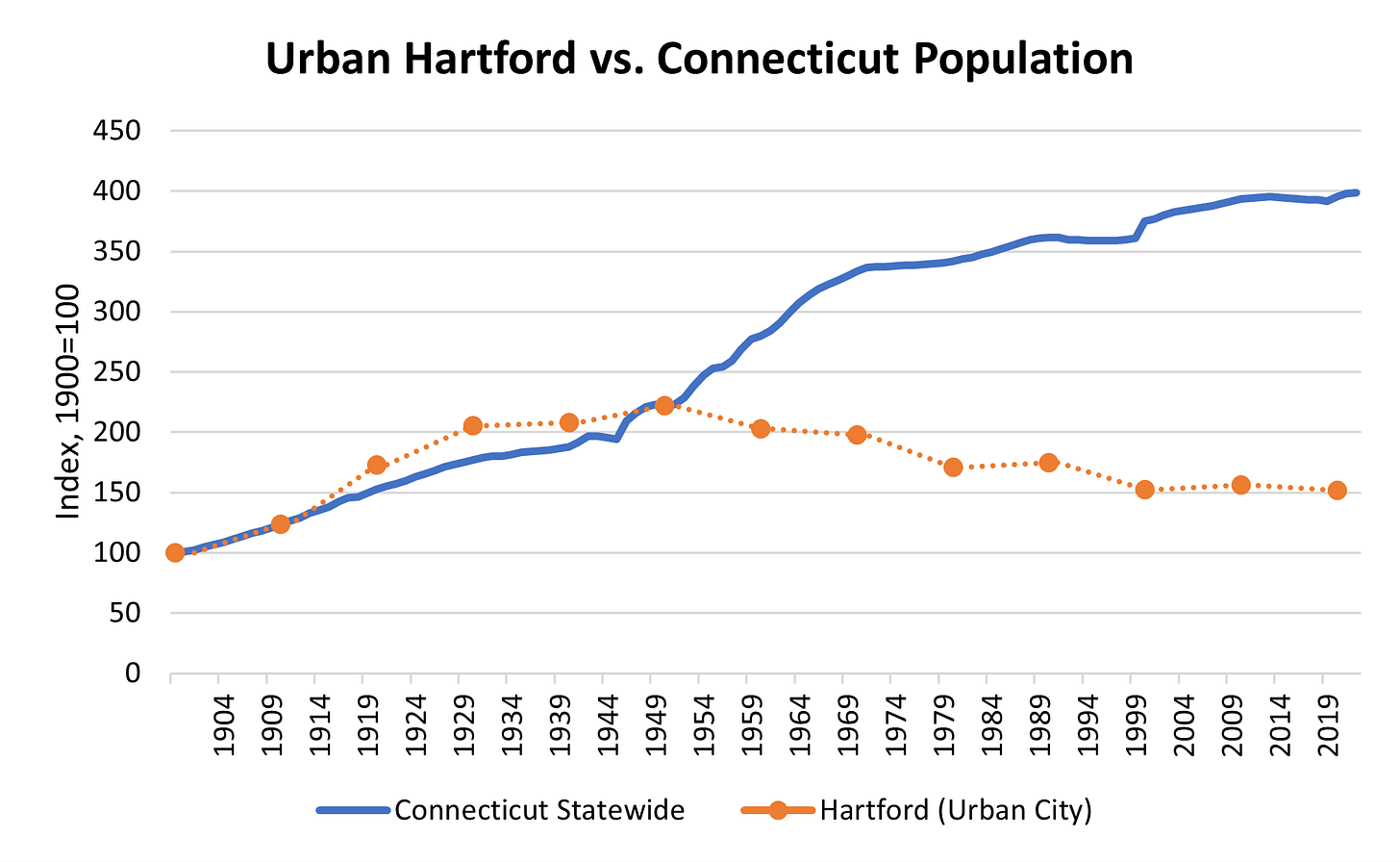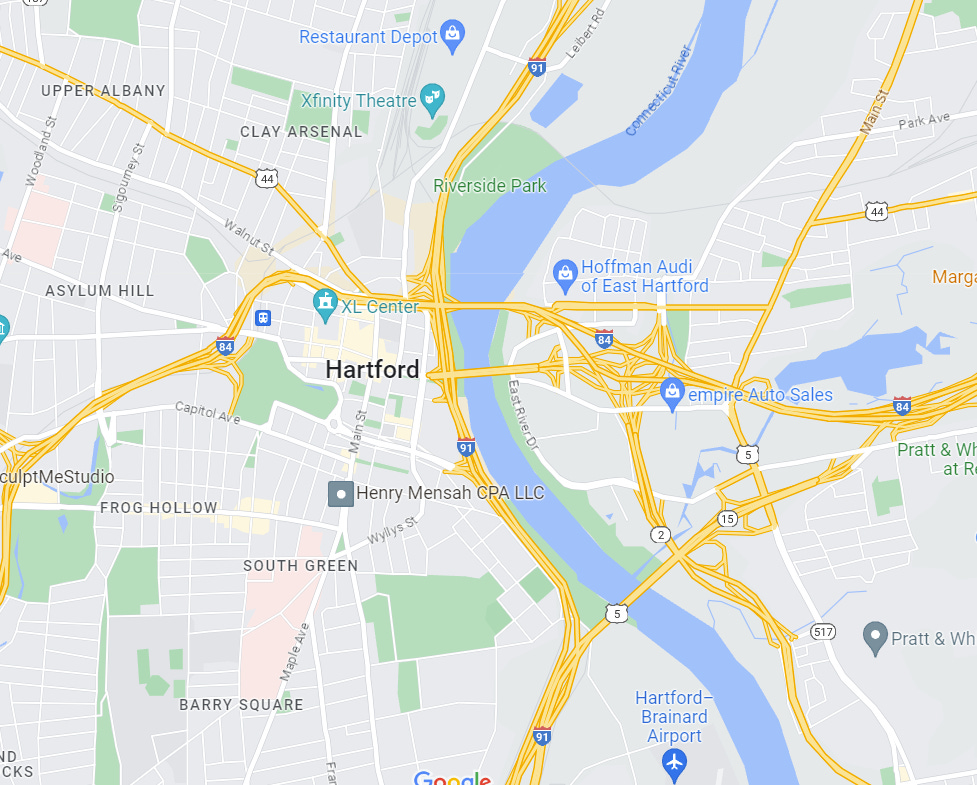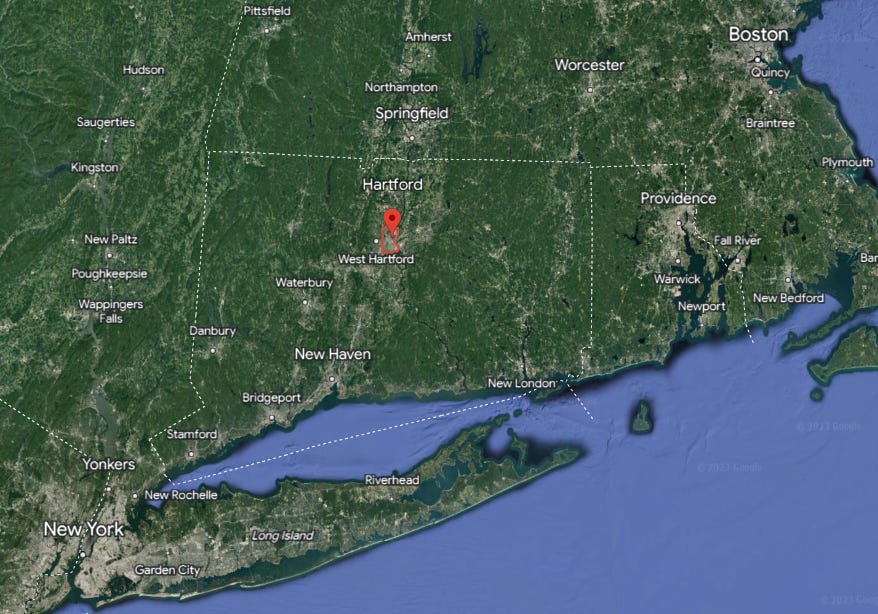I’ve just spent a week in Hartford, Connecticut, and thought it’d be fun to write down some thoughts on the city. My big takeaway: I’ve never seen a city so clearly destroyed by “car culture”.
Hartford is the capital of Connecticut, a small, original 13 state in the northeast. Hartford was once one of the richest cities in the U.S., which is evident in its lavish historic buildings. These days, while it remains an important hub for insurance companies, the city is fundamentally weak.
Hartford’s population (in the city itself, a narrow definition excluding the suburbs) peaked at 177,000 in the 1950 census. Today, it has 121,000 residents, a 32% decline over 70 years.
It’s not like Connecticut has been dying - the state saw some of its best population growth years during Hartford’s initial decline. Had Hartford keep up with the statewide pace, it would hold over 300 thousand residents, and have a population density on par with San Francisco.
What Happened?
Without doing a historical deep dive - its pretty clear that the rise of the automobile (which is symbiotic with the establishment of suburbs) in the post-war decades have really hurt the city. Interstate highways surround the downtown, and much of the eastern side of the Connecticut river is taken up by highway interchanges.
These highways take up space, cut-off neighborhoods, and reduce the appeal for non-car users. While a nice riverside trail exists, someone who lives downtown would need to cross up to 11 lanes of interstate 91 traffic to get to there.
Its not just the roads, but what they carry. Tens of thousands of cars, carrying suburban commuters who need to find parking (only a quarter of Hartford’s workers live in the city). University of Connecticut professor Martin Garrick has done the hard work of mapping the stunning rise of parking lots in Hartford. The downtown core is hollowed out by excessive parking.
Excessive car infrastructure created a vicious cycle where there’s nothing to do downtown (other than go to work), so no one wants to live downtown1. , and because no one lives downtown, there’s no customer or tax base to support having things to do.
So what?
So what - plenty of historical American cities are in decline. St. Louis, Cincinnati, Detroit, and even Chicago have all seen post-war population declines. But the rise of cars (and trucks) doubly hurt Midwest industrial hubs because it killed the advantage of river barges and rail that all those cities thrived from. But Hartford has something that none of the Midwest’s dying cities have: proximity.
Hartford is about 2 hours (100 miles) north of the Greatest City in the world, New York City. It is also about two hours south-west of another Great American city - and several of the world’s best universities in Boston.
As I know now intimately, getting from either Boston or New York to Hartford is not as easy as it should be. Trains from Grand Central station in Manhattan go as far as New Haven. Train trips from Boston also require a change. Amtrak’s Acela service (America’s only profitable passenger rail service for now) follows Connecticut’s coast and chooses Providence over a similarly length journey through Hartford. Bus services are good - except for the traffic risk and delays, but middle and upper class Americans (like Canadians) don’t use the bus - especially since they all own cars.

In my view, economic strategies are hard to come up with in the 21st century. But a tangible path seems quite clear for Hartford: build densely and become a transit-enabled satellite city of New York. The city should replace its surface parking lots with apartments and court priced-out NYC professionals, especially those who can work remotely, and may only need to go into New York for meetings. The existing base of insurance professionals may help with that effort. The New Haven train line would need to be extended to Hartford, and might need to be a “loss-leader” to convince folks that they could live in downtown Hartford and reliably access New York.
The goal would be to have those new residents catalyze a revival of the downtown, one that is waiting to happen. Hartford has beautiful parks, architecture and public spaces, but they are quiet during the day and eerie after sunset because all the workers are gone. Inevitably, that will require choosing people over cars.
Time to build, Nutmeggers!2
As with everything in the U.S., don’t forget the central role of race. The suburbs effectively created segregated communities, and drained the city of the tax base needed to serve the (disproportionately black) remaining residents
That’s Connecticuter’s word for themselves, apparently









